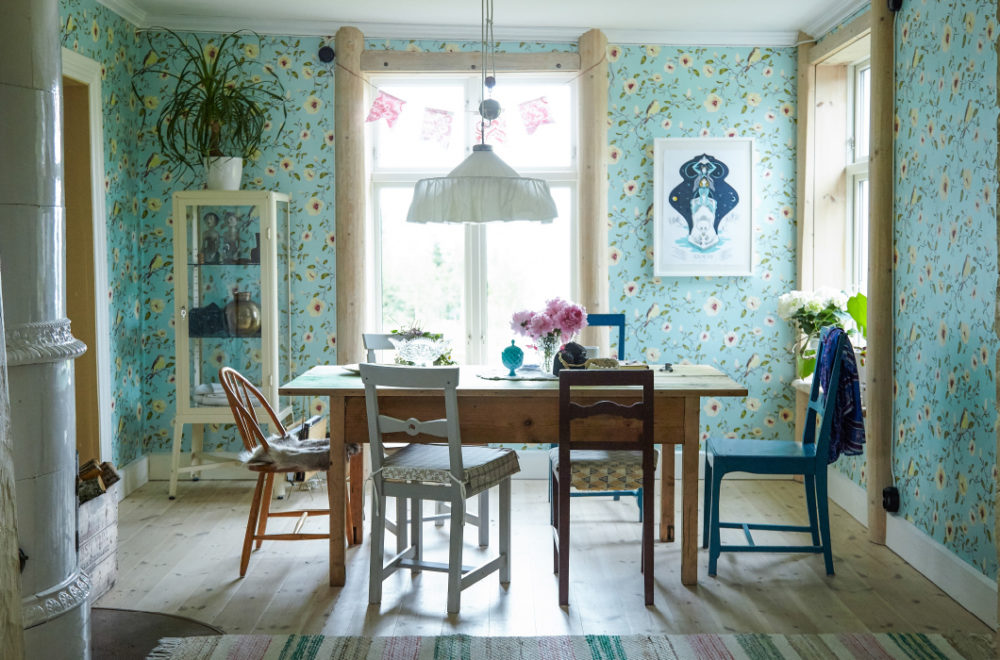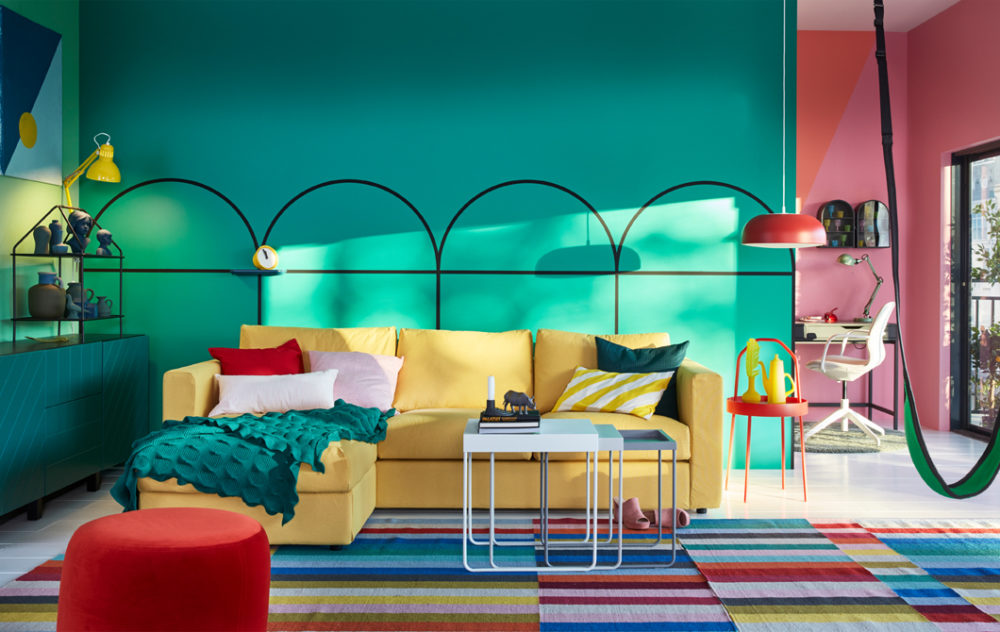The human embryo in the womb passes through architecture—through many architectures—and is transformed by it. Sheltered by layers of flesh and blood, the embryo is nonetheless touched by the radiation-emitting uranium and thorium contained in concrete or brick walls, which can change the molecular structure of its DNA. Old pipes leach lead, poisoning the body before it even takes form. The biologists point to how the experience of architecture affects the psychology of the mother, in turn imprinting on the embryo. Even the womb is a work of architecture; like any other, it is both built according to a template (the human genome) and utterly unique. In other words, the human, at the moment of birth, has already been designed by other designs. It will be redesigned many more times: at 2, at 4, at 6, and at 8, when it will become aware of violet, a color discovered in the eighteenth century. At the onset, we are greeted by architecture, and this architecture touches us. Because there is always something already there, we are never properly outside of the domain of architecture and its effects. So it is not a question of building anew, but rather of rearranging existing materials and blueprints—redecorating, in other words. Even with a text, even with this text.This essay is an adaptation—a textual redecoration—of “Ornament and Crime” by Adolf Loos (1908) in Programs and Manifestoes on 20th-century Architecture ed. Ulrich Conrads (Cambridge, MA: The MIT Press, 1970) 19-24.
But—this thinking is “amoral.”“The child is amoral,” writes Adolf Loos in "Ornament and Crime." “To our eyes, the Papuan is too.” (19). Loos’ polemic against ornament in architecture and design relies on a racist and pseudo-scientific defense, in which the refusal of ornament is evidenced as a sign of evolutionary superiority. His strate-gy is referenced here to suggest that a moralizing tendency underpins the denigration of decorating historically, even if it is now less explicit. To our eyes, the decorator is too. That is the case, at least, for those of us who both adhere to a Levitican worldview and maintain the common association between gay men and decorating. “I can’t shake hands with anybody from San Francisco,” said Richard Nixon.See “Nixon’s Secret White House Tapes”, audio file accessed via //vanityfair.com/news/2014/07/nixon-secret-white-house-audio-tapes “Decorators. They got to do something. But we don’t have to glorify it.” But even the straight female decorator is disparaged. This is because, at end of the day, gay male or not, the decorator deviates from the norms of architecture proper. Two seemingly disparate digressions are packaged as one. The same normative moral code coursing through homophobia flows through architectural thinking. That is, the architect represents and constructs the Law and despises the decorator for refusing it.
Of course, this adjudicating architect does not, in fact, exist. Neither does this monolithic “architecture” or its mirror “decorating.” They are fictions or fantasies—monsters, to be precise. But that does not mean they are not real, that they do not lurk in the shadows, that they cannot frighten us into submission. Like all monsters, the architect-judge is composed of many parts—some big, some small—that together create something larger that its sum, larger than life. It has the head of Adolf Loos writing against the sartorial flourishes of the “fop” and the tail of Frank Lloyd Wright claiming modern art as degenerate because of the prevalence of homosexual modern artists.On Loos, see: “Modern Façades, Anti-Modern Interiors: Gender, Partnership, and the Architecture of Adolf Loos” by Adam Boyd Brandow (March, 2010). On Wright, see the exchange between Marcel Du-champ and Frank Lloyd Wright during The Western Round Table at the Museum of Modern Art in San Francisco, 1949. From Difference / Indifference: Musings on Postmodernism, Marcel Duchamp and John Cage, ed. Moira Roth. (Overseas Publishers Association: New York, NY, 1998) 5. It is Le Corbusier desecrating Eileen Gray’s masterpiece, and home, by painting on it without permission, butt-naked, as if to say the woman is consigned to the decorative, as if to put her in her place. But it is also older than this—the whip of Vitruvius, the snarl of Palladio: the architect who feels compelled to write edicts. And it lives on in the masculine posturings of the Bjarke Ingels of the present, who winkingly assert the dominance of a straight masculine image for architecture by registering the domain big.dk. It is so embedded in the discourse that it remains uninterrogated by the great interrogator Rem Koolhaas when he writes in Delirious New York (1978), “[Le Corbusier] does not know that 10 Manhattan theories are only diversionary tactics, mere decorative dressing for the essential founding metaphors” (emphasis my own); or else, in Junkspace (2001), when he complains that “structure groans invisibly underneath decoration, or worse, has become ornamental.”Rem Koolhaas, Delirious New York: A Retrospective Manifesto for Manhattan (New York: The Mona-celli Press, 1994), 279.; Rem Koolhaas, “Junkspace,” October 100 (Spring 2002): 176. The monstrosity of the monster is that it appears harmless. Isolated, its aggressions are minute. But together they compose a force capable of persisting despite innumerable challenges lodged its way—in particular, those of the last half-century. In order to fight this monster, it must be revealed as such. It must be taken on as a monster in its most monstrous form and challenged in armed conflict by an equally grotesque assemblage. An architectural monster—a decorative monster—neither real, nor unreal.
The horror story begins at the beginning: according to our common sense, to the strictures of our discourse, architecture must precede decorating. After all, there must be a structure before paint can be applied. Nevermind the structures-before-the-structure: where there is already something built, the architect sees an unoccupied site. The architectural imaginary is a colonial imaginary, and it obscures the destruction that necessarily precedes it. Once the rubble has been cleared, the construction site appears as untouched ground, completely blank, a new beginning. From there we can proceed to building, and then on to decorating. So there is a temporal ordering that precedes the other orderings, which relate only in that they maintain the same hierarchy. That is to say, the architecture/decorating binary is supported by an ad-hoc, Frankensteinian assemblage of disparate, seemingly arbitrary rationales and clichés, bound together primarily by a shared sentiment: disdain. For example, architecture, as an art, carries more gravitas than decorating. We have architecture theory but no decorative theory; a history of architecture in every school but a largely unwritten history of decorating. And then there are the shadow associations. The architect is male, straight, assertive. The decorator is a woman or, otherwise, a gay man. Decorating is therefore effeminate and excessive, while architecture appears masculine and essential. “Merely decorative,” we say, alongside Koolhaas. Where the architect follows logic, our shared common sense, the decorator seemingly does not. Not logic, but intuition. Not rationality, but feeling. The architect who paints a wall white is modern and good; the architect who draws a flower on the wall is no longer an architect. “There is a relationship between flowers and convicts,” writes Jean Genet.See Jean Genet, The Thief’s Journal (Grove Press: 1994). 3.
Architecture, in other words, is phallogocentric; it is part and partial to the “system of metaphysical oppositions” that dominates Western thought, such as presence/absence, self/other, reality/appearance, male/female.See Jacques Derrida, Writing and Difference (U of Chicago P: 1978). 20. In each there is a privileged term that points to an imagined original or essential quality. The ‘phal-’ of phallogocentrism refers to the patriarchal inheritance that determines this logic. If, indeed, architecture/decorating can be read as one such binary, it is twinned with male/female and hetero/homosexual binary oppositions. The association between decorating and effeminacy contributes to its degradation, or, at least, its status as inferior to architecture. Such associations need not be codified or clarified; in fact, their shakiness, their indeterminacy actually helps to secure their power. It is not the homosexual act that frightens people, argues Michel Foucault, but the possibility that homosexuality presents the possibility of a new way of life, a new form of relationships among people beyond the rigid codes of heterosexuality.See “Friendship as a Way of Life,” Michel Foucault in conversation with R. de Ceccaty, J. Danet, and J. Le Bitoux for Gai Pied. From Ethics: Subjectivity and Truth, ed. Paul Rabinow (The New Press: 1998), 136. When things are clearly visible they lose efficacy. It is the speculative, the associative, that is powerful and disturbing. It leads young men insecure of their sexuality towards architecture instead of interior design; women towards interior design instead of architecture. In other words, these directives somehow appear innate, uninterrogatable. Yet they, like all social norms, all regulatory apparatuses, are constructed. They are founded on other constructions and serve as the foundation for even more.
The regulation of the means of production of our dwellings, and therefore of our behavior, is the origin of architecture. It is the babbling of autocrats. All architecture is authoritarian. Monstrous. It has no essence, but is, again, a composite of parts. It is, itself, the will to bind parts together into the appearance of a legible whole: the ‘ruling (arkhi-) builder (tekton)’ we inherited from the Romans. That there can be a distinction between architecture and decorating in the first place is part of the glue that coheres architecture. Architecture, in other words, is the episodic effort to codify architectural thinking; it is the construction of rules for relating to spatial production. To speak of a decorative thinking at all is already to break the rules. Decorating is the name architecture gives to that which defies its law, to that which exists beyond the domain of its thinking. Architecture crafts elaborate mechanisms to enforce its preeminence. But, since decorating persists anyway, architecture endeavors to domesticate it. It creates a new profession in its own image, interior architecture, which requires degrees—in other words, preexisting wealth or speculative income in the form of debt. If an architect, a Zaha Hadid perhaps, decorates through her architectural design, it is not called decorating. To call it decorative would be insulting. Instead, it is holistic design. In other words, architecture either colonizes decorating or leaves it at the door. Decorating is never respected in its own right. The decorating that non-professionals do, that everyone does, must remain exiled from the elevated domain of architectural thinking.
There is, of course, an economy and ecology to all of this. Architecture is a much more costly affair than decorating, yet decorating, guised in its professionalized form, appears somehow to suggest affluence more than architecture. Decorating may appear excessive but architecture is noblesse oblige incarnate. Architecture assumes its own worth is inviolable; it confuses labor with public service. The characterization of decorating as elitist is itself a product of the classism that runs through architectural thinking. Architecture requires its academy and its certifications. So decorating is professionalized or else pushed beyond the boundaries of thought. But who doesn’t decorate? It is a practice that cuts across class, race, ethnic, national, gendered boundaries. In other words, the populism of decorating undermines the very core of architecture, which is elitism. So it is banished from the sphere of serious thought.
Changes in architectural thinking lead to a premature devaluation of the labor product. The worker’s time and the material employed are capital goods that are wasted. That is, shifts in architectural taste enable the cultural defense of premature demolition. What looks like the progression of architectural thinking is in fact the means of production of new terrains for the expenditure of surplus capital. Of course, decorating also operates similarly. New trends help facilitate the sale of properties, in turn accounting for new mortgages that can be bundled and traded at high speeds until a bubble swells and then bursts. But the scale is fundamentally different. Where architecture requires a wrecking ball to produce ‘the new look,’ decorating does not—another reason architecture is held high above decorating. At the heart of this is a question of time. If time is money, then architecture is clearly more valuable than decorating—or at least more expensive.
Where architecture imagines its product immutable, decorating always presupposes redecorating. Decorating, unlike architecture, acknowledges the trend as a constitutive element of the production of forms (at least in capitalism). It therefore does not lay claim to a false expectation of permanence. And, once again, the stakes are higher in architecture than decorating. The former consumes massive resources in order to secure its durability—pulverized stones aggregated and congealed in a process that releases excessive amounts of gaseous carbon into the atmosphere. Because it doesn’t ever believe that it will be victim to the very process of novelty-production responsible for its own being, it ignores the possibility—the near-inevitability—of its destruction. This is particularly true today, when it is far easier to imagine a work of contemporary architecture becoming a demolition site than becoming a ruin. Time cannot make good this damage.
To ensure the stability of this production cycle, the architect is disciplined into a particular relationship with time: they are always on the heels of the present. They cannot but assert a ‘here’ and a ‘now.’ We think of architecture through its imminent affects. The trend of the past is mocked, while the trend of today is not a trend. The newest software determines the new forms. The newest philosophy serves as the new rationale. “Aren’t we past Heidegger?” asked an architect during a lecture I attended. The present is understood as a dialectical relationship to the past. In other words, there is always a clear-cut distinction. Architecture is the cut. The past is the past and the present is the present and the future is the future. The truth of the building is the day it opens. Efforts to destabilize this metaphysics of presence, from alternative preservation to critical conservation, chip away at its foundations—but for now, the building remains largely intact. Architecture is “the last fortress of metaphysics,” writes Jacques Derrida.See Jacques Derrida, “Pointe de folie: maintenant l’architecture,” in La Case Vide: La Villette 1985 by Bernard Tschumi, trans. Kate Linker, (Architectural Association: 1986). 69.
Meanwhile, the decorator lives among ghosts. Hidden details are revealed, old paint colors matched. Objects are chosen for the associations they conjure, but sacrilegiously when done best. The Louis Quinze armoire pairs nicely with the Eames chair. Or: the ‘70s thrift store lamp looks great on the new Ikea table. By juxtaposing different time periods, a present-that-is-not-present is constructed. In the view of the architect, a material is new when it arrives on site. Marble may evoke a classical past, but it’s also capable of signifying the contemporary. In choosing a slab, the architect is de facto designing it, even—or all the more so—if no fluting is carved. With decorating, on the other hand, a material is always understood as embedded within a web of associations and histories. That is why the decorator is more likely than the architect to use an old marble mantle rather than quarry a new one. Age is prized. The contemporary is understood as a disjointed relationship to the past. Decorating is an act of necromancy, in which new life is breathed into discarded objects. Through it, we maintain traces of the past. And all this is done in part for the visitor who has yet to arrive; for the dinner party that will someday happen. Decorating makes the house a home, but also clears a space for the guest. It is integral to the practice of hospitality.
I am preaching to the queers, I mean those who stand askew from the normative. We come to exist in a world already occupied by living and nonliving things, as well as social configurations, political orders, and economic regimes. The blank space of the computer screen is and always will be utopic—an imaginary non-place. The effort to actualize a utopia necessitates some form of violent displacement. Every design is actually a reordering and rearranging of what already exists—redecorating the order of things, moving around certain objects, shelving others, imagining what could be out of what already is.
In other words, decorating constitutes a relationship with time that stands in distinction to that of architecture proper. It is, simply, the rearrangement of what already exists into a new form. Yet this newness is haunted by the past. It is never quite present. Decorating is a process in which one willfully changes their perception of what is to imagine what could be. But, pivotally, and unlike normative architectural thinking, the what could be is formed from the what is—not from a blank slate, an imaginary and endless reserve of materials and labor. There is no bestand when it comes to decorating.“Everywhere everything is ordered to stand by, to be immediately at hand, indeed to stand there just so that it may be on call for a further ordering. Whatever is ordered about in this way has its own standing. We call it the standing-reserve [Bestand],” writes Martin Heidegger in “The Question Concerning Technology,” from The Question Concerning Technology and Other Essays, ed. and trans. Wil-liam Lovitt (New York and London: Garland Publishing, 1977). 17. There is either the objects you already own or those that you can purchase. At the very most, there is the lumber used for new built-ins, cut according to preexisting corners and marveled at for its origin in a walnut tree or pine tree. Decorating is architecture that understands itself as contingent, as existing within an infinite web of relations.
I am preaching to the queers. For, if queerness is “by definition whatever is at odds with the normal, the legitimate, the dominant,” as David Halperin asserts; if it is “not a positivity but a positionality vis-à-vis the normative,” then a queer architecture would, likewise, not be some essential thing but rather a position taken in relationship to the normative.See David Halperin, How to Be Gay, (Belknap Press: 2014). 69. And if construction can be said to be the normative orientation of architecture, unimpeded by resource shortage or the desecration of entire cities, then decorating can be considered a queer position, not just because it has been associated with queer men but because it fundamentally challenges this normative position. The architect strives after the new, regardless of the cost. The decorator concentrates their own powers of invention on other things.







